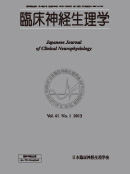Volume 50, Issue 3
Displaying 1-9 of 9 articles from this issue
- |<
- <
- 1
- >
- >|
Original Article
-
2021Volume 50Issue 3 Pages 77-82
Published: June 01, 2021
Released on J-STAGE: June 17, 2022
Download PDF (876K)
Special Features
-
2022Volume 50Issue 3 Pages 83
Published: June 01, 2022
Released on J-STAGE: June 17, 2022
Download PDF (469K) -
2022Volume 50Issue 3 Pages 84-88
Published: June 01, 2022
Released on J-STAGE: June 17, 2022
Download PDF (251K) -
2022Volume 50Issue 3 Pages 89-93
Published: June 01, 2022
Released on J-STAGE: June 17, 2022
Download PDF (1212K) -
2022Volume 50Issue 3 Pages 94-98
Published: June 01, 2022
Released on J-STAGE: June 17, 2022
Download PDF (460K) -
2022Volume 50Issue 3 Pages 99-106
Published: June 01, 2022
Released on J-STAGE: June 17, 2022
Download PDF (3626K)
General Review
-
2022Volume 50Issue 3 Pages 107-112
Published: June 01, 2022
Released on J-STAGE: June 17, 2022
Download PDF (930K)
Others
-
2022Volume 50Issue 3 Pages 113-129
Published: June 01, 2022
Released on J-STAGE: June 17, 2022
Download PDF (2020K) -
2022Volume 50Issue 3 Pages 130
Published: June 01, 2022
Released on J-STAGE: June 17, 2022
Download PDF (113K)
- |<
- <
- 1
- >
- >|
